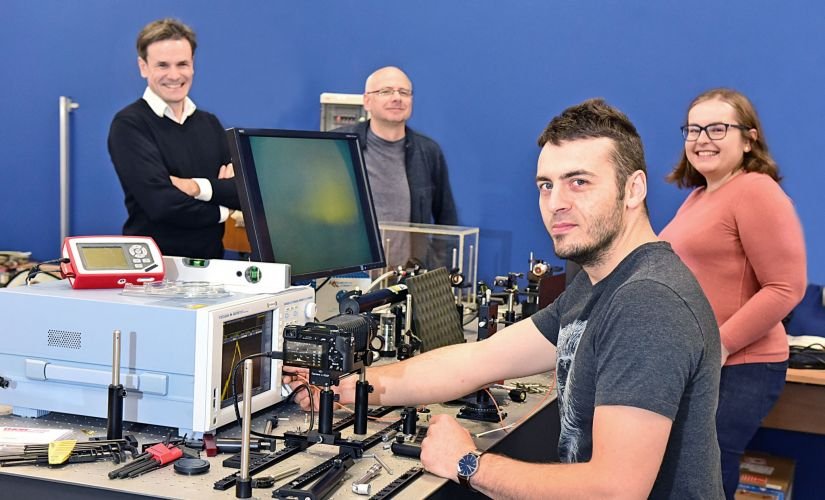A team of scientists headed by Prof. Tomasz Czyszanowski from the Institute of Physics described the discovery of a new phenomenon involving the increase of optical power emitted by Vertical-Cavity Surface-Emitting Lasers (VCSELs) as a result of breaking their cylindrical symmetry. The latest issue of the world's leading academic journal Nature Photonics recognises the novelty and applicability of this discovery and dedicates to it an article from the News & Views series: "Asymmetry brings power boost".
As explained by prof. Tomasz Czyszanowski, leader of the Photonics Research Group from the Institute of Physics:
The discovered phenomenon is a result of the abolition of degeneration of optical states in asymmetrical systems, which enables more effective forced emission. It can be imagined by a distant and inaccurate, but illustrative comparison to a sieve, through which sand passes. The sand in the sieve is the electrons collected near the laser area. The sand flying through the holes of the sieve are electrons entering the laser area, which convert their energy into photons, which join other photons to form a laser beam. If there is a higher density of holes in the sieve, then the sand will fly through the sieve faster. Disrupting the cylindrical symmetry of the laser has an analogous effect to increasing the density of holes in the sieve. Electrons accumulated near the laser region become more likely to hit the laser region and convert their energy into a photon through a forced emission process, resulting in an increased number of photons in the laser beam.
Interest in semiconductor VCSELs (Vertical-Cavity Surface-Emitting Lasers) has exploded in recent years, with their use for 3D space imaging in devices and vehicles that move autonomously or monitor the surrounding space. The range of devices currently using VCSELs is very wide, from mobile phones to robots, self-driving hoovers, cars and drones. This type of lasers have come a long way since the 1980s and 1990s, when they were considered a scientific curiosity. In the early 2000s, they found their first, very specific applications, and now they have become a leading tool that can help make autonomous devices affordable. The attractiveness of VCSELs stems from their cylindrical geometry, which distinguishes them from the more commonly known semiconductor laser diodes, also known as edge emission lasers. The use of cylindrical symmetry in VCSEL lasers allows to obtain a laser beam with circular cross-section and small divergence, impossible to obtain by laser diodes. Cylindrical symmetry also results from the specific technological processes used in the production of VCSELs, as well as from the human desire to create ordered and therefore symmetric structures.

